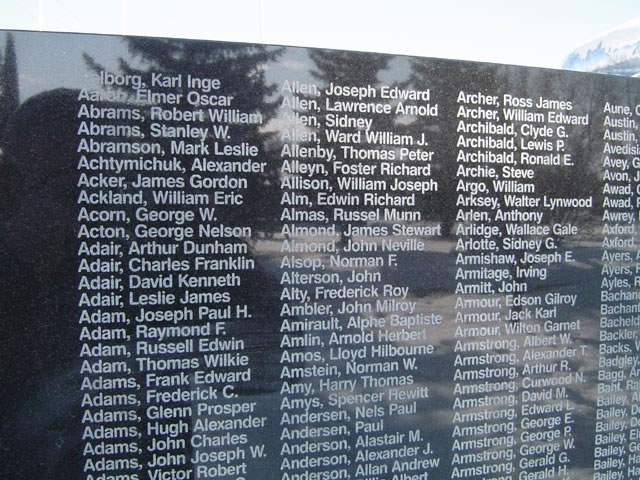Last Post - Flight Sergeant Edwin Richard Alm
Back to Program | Home | Back to Last Post Index | Back to Bomber Memorial |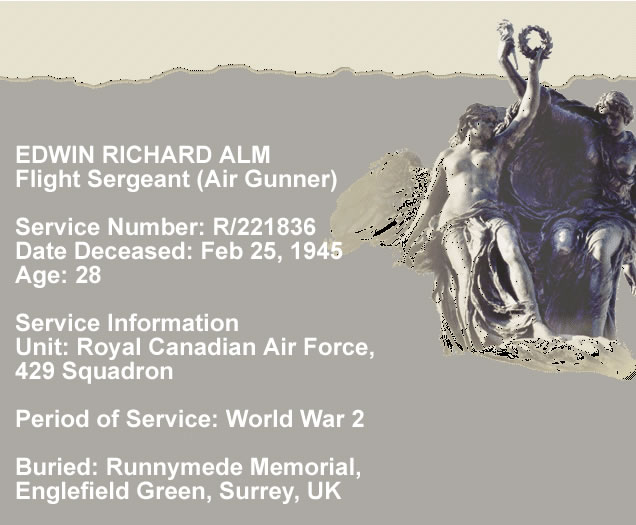
Source: http://www.vac-acc.gc.ca/remembers
Lost Bomber Report
"Serial Range MZ447 - MZ495. 49 Halifax Mk.111. Part of a batch of 180 HP Halifax Mk.B.111 planes delivered by the London Aircraft Production Group (Leavesden) between 25Sep44 and 20Nov44. MZ452 was initially issued to No.427 Sqdn. At the time of its loss was on temporary loan to No.429 Sqdn. Airborne 1658 25Feb45 from Leeming borrowed from 427 Sqdn, to lay mines in Oslo Fjord (Tomato Region). Lost without trace. All are commemorated on the Runnymede Memorial.
Source: www.lostbombers.co.uk
Click here to read the entire report.
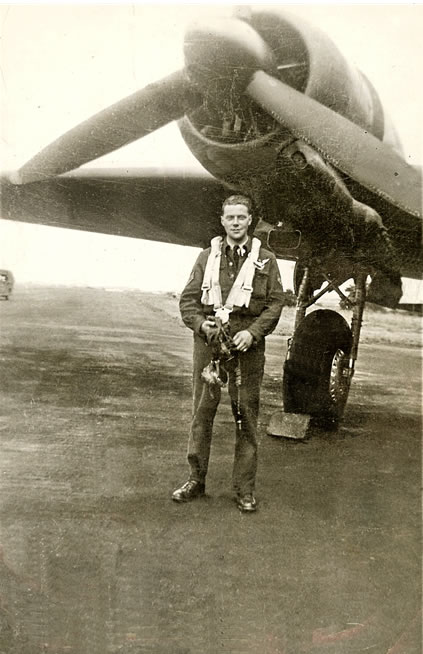
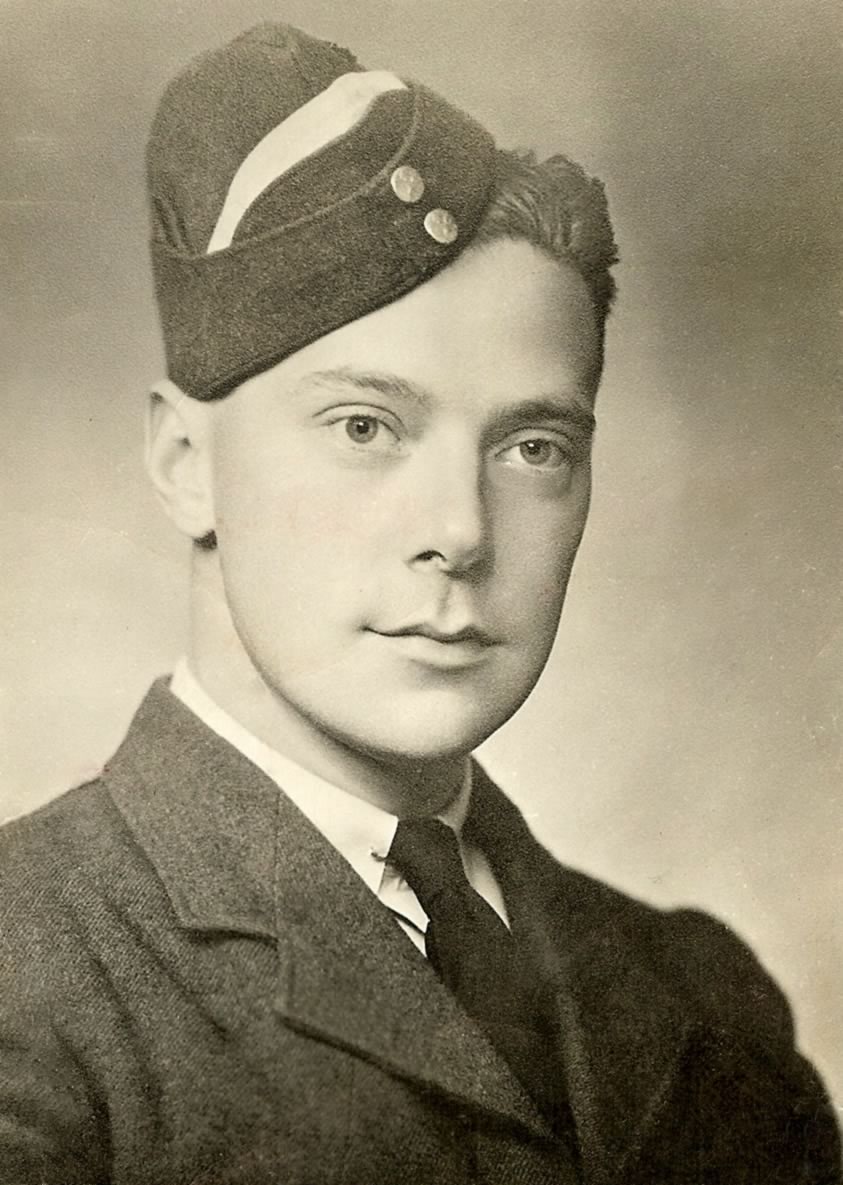
Flight Sergeant Edwin Richard Alm, a young man from Saskatoon, Saskatchewan, attended #3 Bombing and Gunnery School Class 72 Dec 15, 1943 - Mar 9, 1944, with many of the airmen on this site, including his friend Reginald Frank Piercy. Together, they crewed up and joined the Benson Crew, of 429 Squadron. (The Bison Squadron, whose motto is Fortunae Nihil). The crew failed to return from an operation near Oslo, Norway on February 25, 1945. Flight Sergeant Alm is the son of Edwin Albert and Alice Victoria Alm, nee Shortt; husband of Barbara Alm, father to Edwin and Barbara, of Vancouver, British Columbia, Canada.
Ops Report February 25/26, 1945
10 Halifaxes from 427 and 429 Squadrons were ordered on a mining operation to Oslo. The crews were over the garden at between 3,000 and 3,500 feet, sowing 20@1800 lb and 20@1500 lb mines.
__________________________________
F/Lt I. Benson RCAF![]() and crew from 429 Squadron, flying Halifax III MZ-452 coded ZL-E, borrowed from 427 Squadron failed to return from this operation.
and crew from 429 Squadron, flying Halifax III MZ-452 coded ZL-E, borrowed from 427 Squadron failed to return from this operation.
Sgt J.C. Baker RAF![]()
F/O V. B. Fleming RCAF![]()
F/Sgt J.G. Buchanan RCAF ![]()
W/O2 W. R. Fields RCAF![]()
F/Sgt R.F. Piercy RCAF![]()
Click here to read about Reginald Frank Piercy.
F/Sgt E. R. Alm RCAF![]()
All were lost without a trace. Their names are inscribed on the Runnymede War Memorial.
Source www.Rcaf.com and "They Shall Grow Not Old" by Les Allison and Harry Hayward,1995. Click here to read the entire ops report.
![]() Click here to read the ""They Shall Grow Not Old" entry for Flight Sergeant Edwin Richard Alm.
Click here to read the ""They Shall Grow Not Old" entry for Flight Sergeant Edwin Richard Alm.
Below is an image from the excellent Richard Koval site showing the plane which was borrowed from 427 Squadron, and subsequently crashed. The image is by permission of Richard Koval. The Nose Art says "Enemy Exterminator."

The Air Forces War Memorial at Runnymede recognizes the sacrifices of 20,000 men and women who gave their lives. The site overlooks the Thames River and the meadow where the Magna Carta which recognized basic freedoms under law was sealed by King John in 1215. The memorial was designed by Sir Edward Maufe with sculpture by Vernon Hill. The words by Paul Scott and the images by Antony McCallum convey in some measure the debt owed to the brave men and women of the Commonwealth Airforces.
"Here, where the trees troop down to Runnymede, Meadow of Magna Carta, field of freedom,
Never saw you so fitting a memorial" ...From a poem by Paul Scott.
The image below shows the entrance to the Air Forces Memorial. The Per Ardua sculpture shows above the 3 arched cloister windows, and the astral crown can be seen above the building.
All images of Runnymede on this page, unless specifically noted, are courtesy of Antony McCallum at Wyrdlight McCallum. http://wyrdlight.com. Copyright remains the property of Antony McCallum. The word Wyrd comes from the anglosaxon and is translated as ever becoming, ever-changing light. Please click here to see more of Antony McCallum's wonderful work.
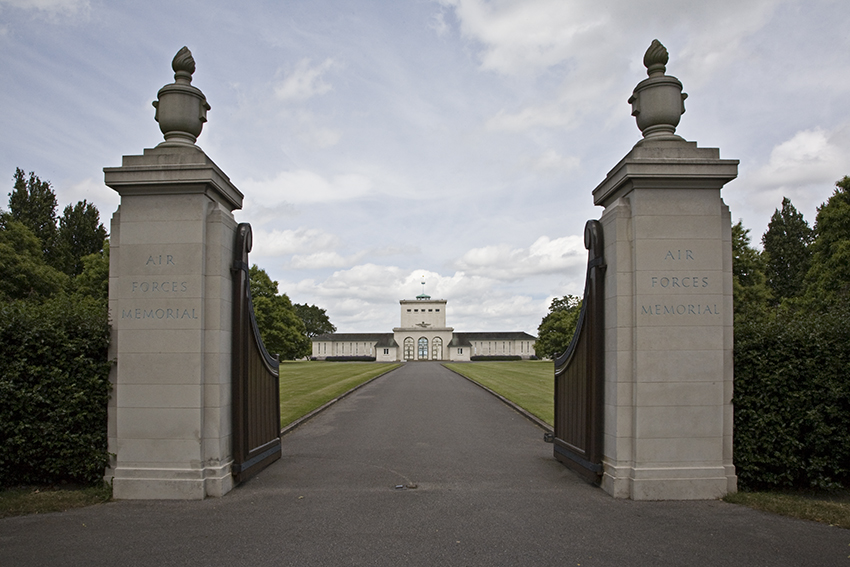
Faintly on the image above one can see the Per Ardua Ad Astra logo of the Royal Air Force, and Royal Canadian Air Force. It depicts an eagle flying, and with its head lowered and to the left, with the logo, loosely translated as "Through adversity to the stars", with an Imperial Crown above. 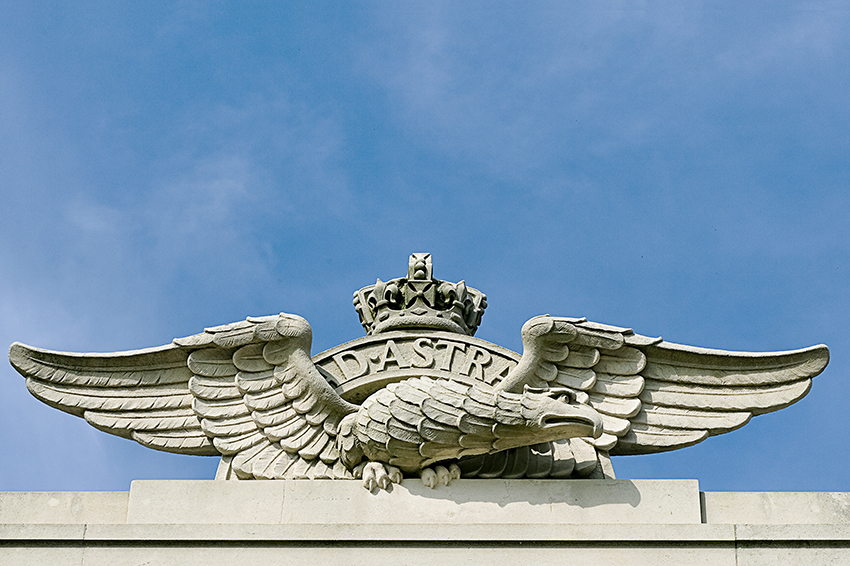
Nearly 40,000 of the men and women of the Air Forces of the British Commonwealth who gave their lives during the war have no known grave. 20,456 of these brave men and women are commemorated by name on the Runnymede Memorial. The architect, Sir Eward Maufe designed the site as a rectangular plot surrounded on all sides by buildings. (a Quadrangle) 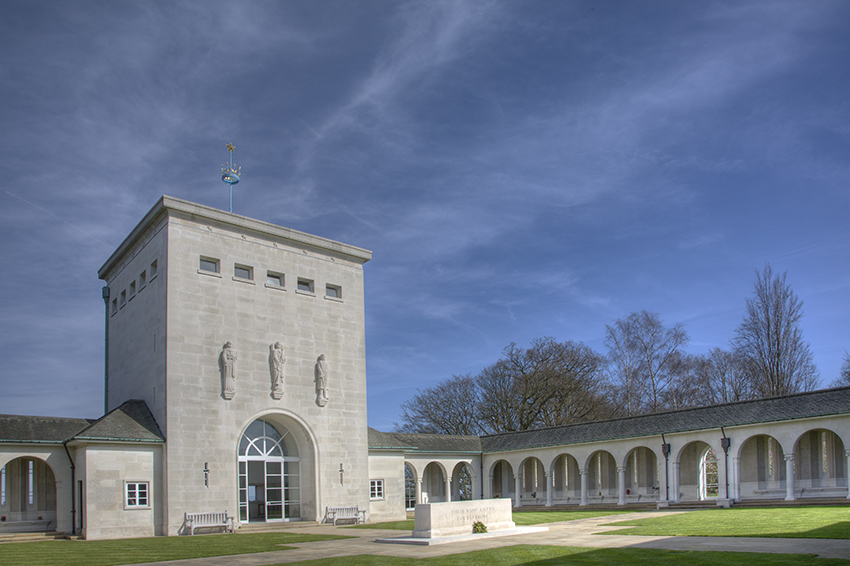
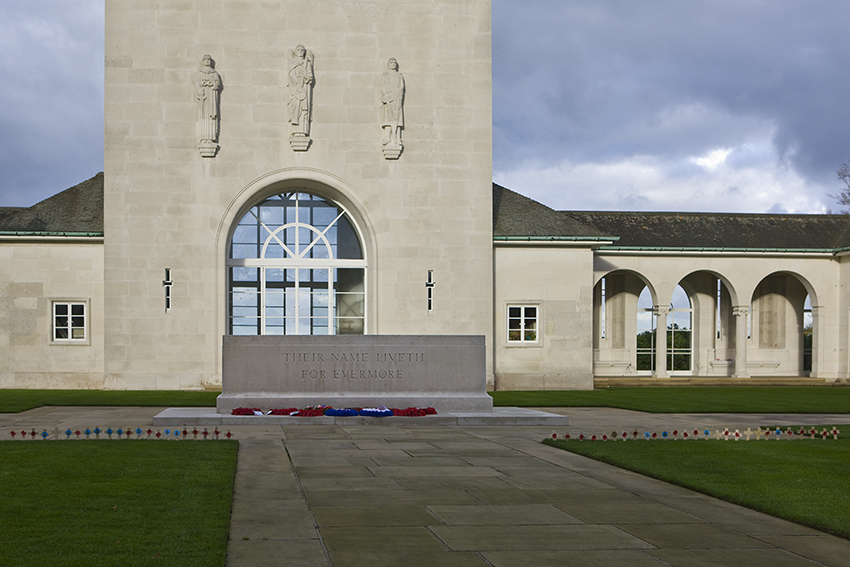
These sculptures, above and below, are of the figures Justice, (blind), Victory, with the horn and wreath, and Courage with the sword and shield. They were carved by the sculptor Vernon Hill and are found above the main entrance to the Chapel.
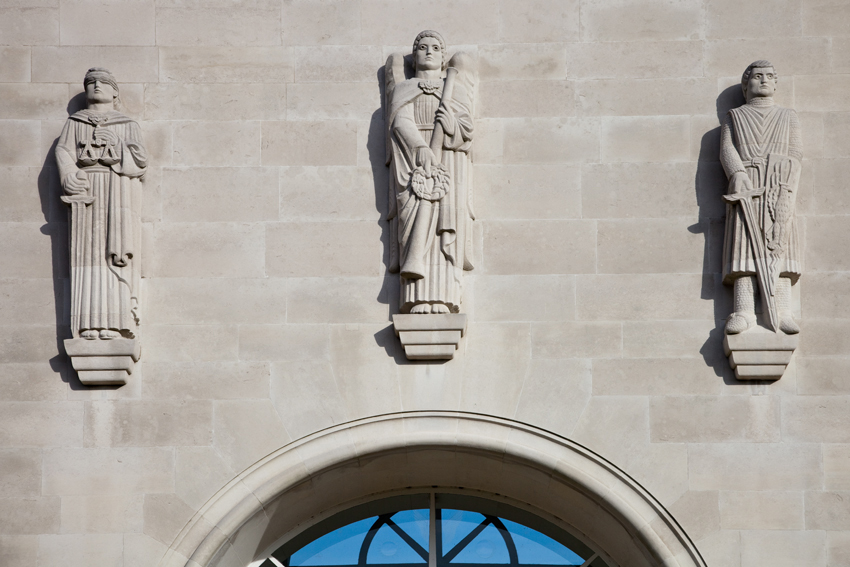
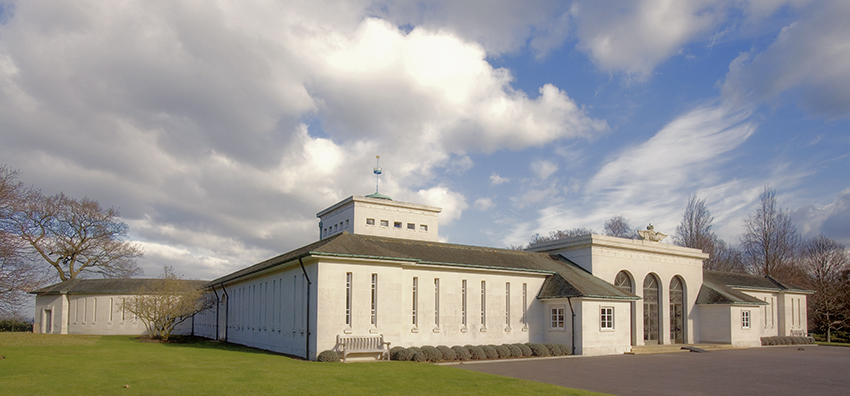
The Runnymede Site consists of 182 acres of meadow backing the Thames river and adjacent woodland. Runnymede Meadow is believed to be the site where the Magna Carta was sealed. From the Tower, one can see sweeping views of the adjacent countryside.
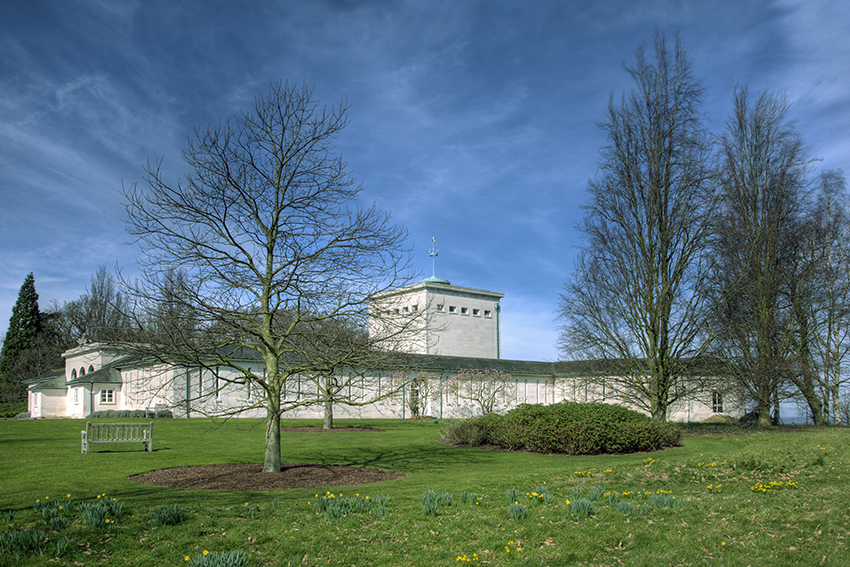
This image above and below shows the astral crown. Above it graces the top of the control tower. The sculpture is shown in more detail below and consists of a blue crown and large central star with smaller stars intermingled with airforce wings, all in gold. The symbol is historically used to represent military air service.
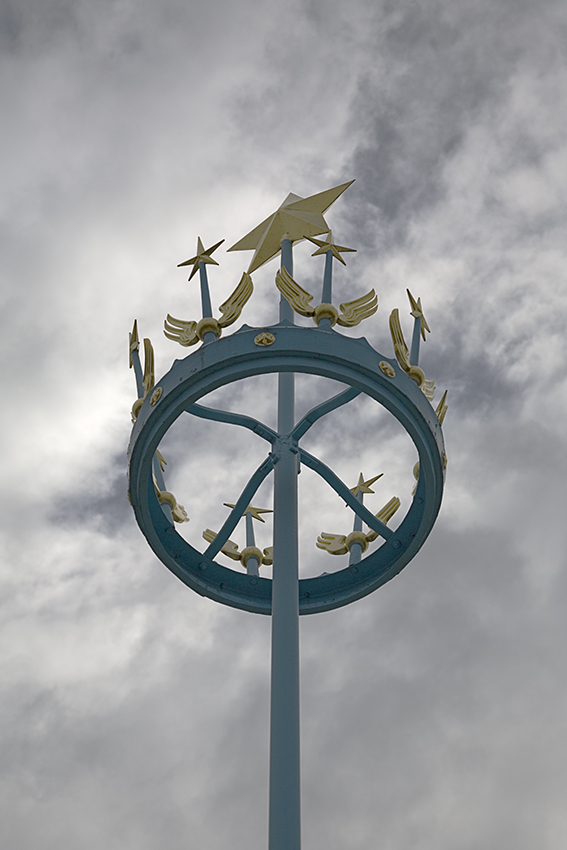 .
.
Lions guard the entrance gates.
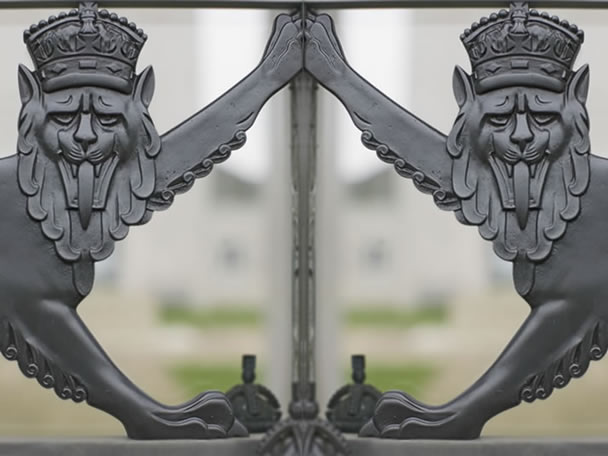
Follow these links to see the Airman's Psalm, engraved on the great north window of the shrine, and a poem written by Paul Scott a student.
Rudyard Kipling, the British author and poet lost a son in World War I. At the request of the Common Wealth Graves Commission, he selected the phrase, "Their Name Liveth for Evermore", from Ecclesiasticus 44:14. "Their bodies are buried in peace, but their name liveth for evermore."
The phrase is engraved in stone at all Commonwealth War Graves Sites, and Antony Mccallum has photographed the image below from Runnymede.
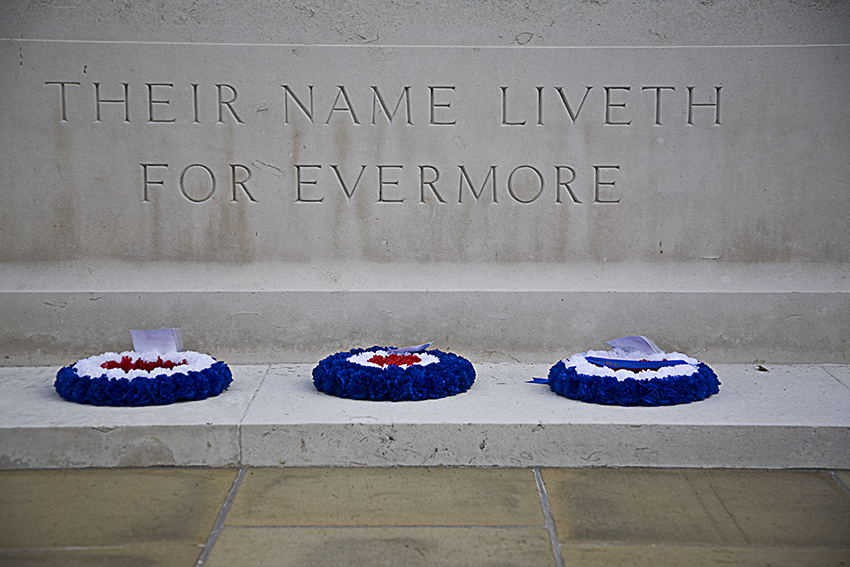
Looking like partially opened stone books, the names of the dead are recorded by year and by Commonwealth Airforce on the tablets at the Memorial. The painted ceilings were created by John Hutton. 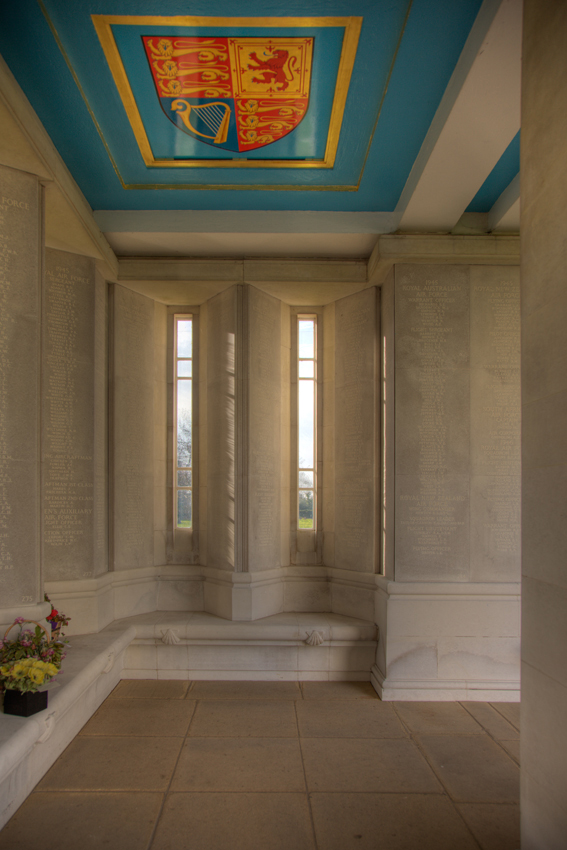
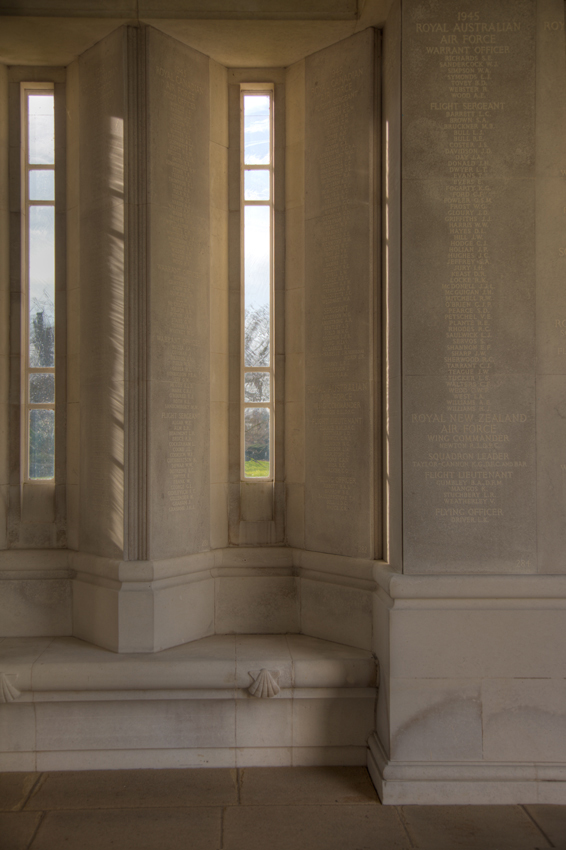
The images below show the cloisters, a series of open walks with columns facing the rectangular quadrange. The architect, Sir Edward Maufe designed the placement of the columns such that the sunlight precisely illuminates each panel with names on it in turn. Renowned British photographer, Antony McCallum has captured the light in the striking images below, waiting patiently for the light to advance to the proper panel with the names on it..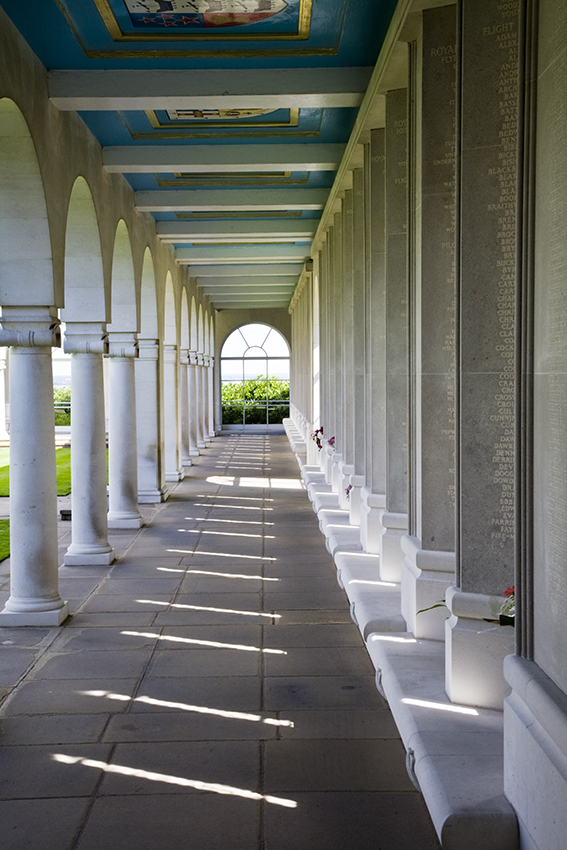
The Cloister Ceilings are decorated with coats of arms of the Commonwealth Countries, below one can see the Australian Coat of Arms in the foreground and the Canadian Coat of Arms in the background.
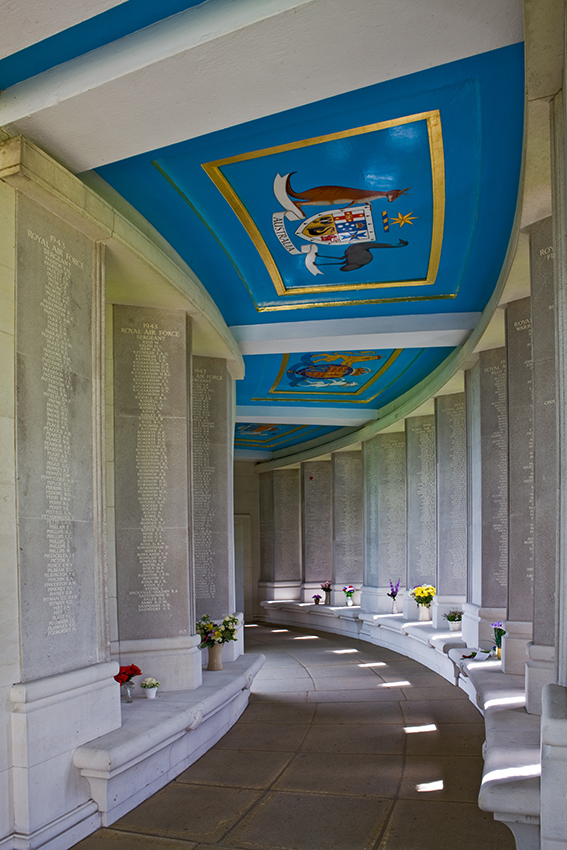
Flight Sergeant Edwin Richard Alm's name is engraved on Panel 281 on the left side of the lancet window below, which is in the south east corner of the cloister. The architect, Sir Edward Maufe designed the Memorial so that as the sun moved across the sky it would illuminate the Panels in turn through the lancet windows. Renowned photographer Antony McCallum of Wyrd Light waited for the sun to move to panel 281 before photographing it. Next to the Royal Canadian Airforce Panels is the Royal Australian Panel which can be seen on the right of the photo below.
Panel 281 which contains F/S Edwin Richard Alm's name is shown below. Click here to see panel containing Flight Sergeant Piercy's name, from the same crew.
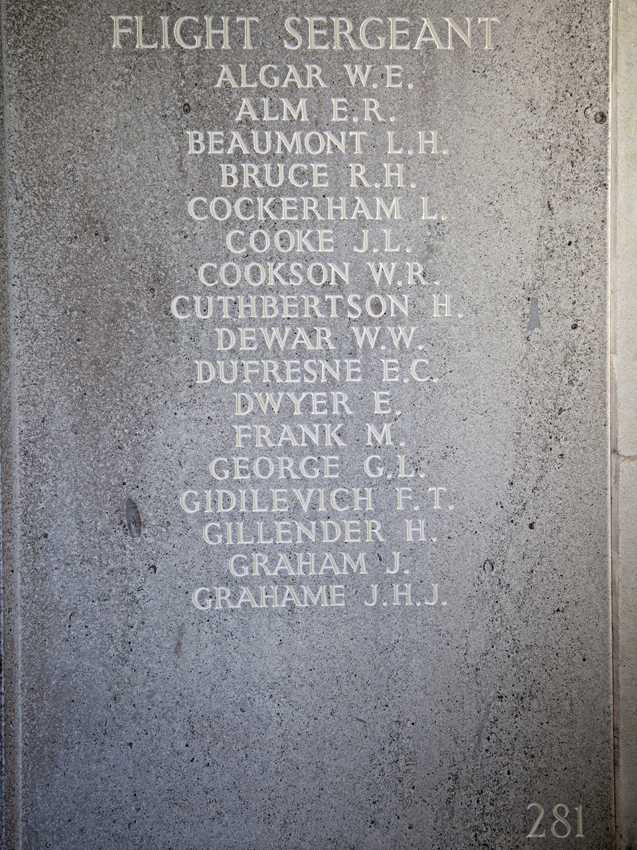
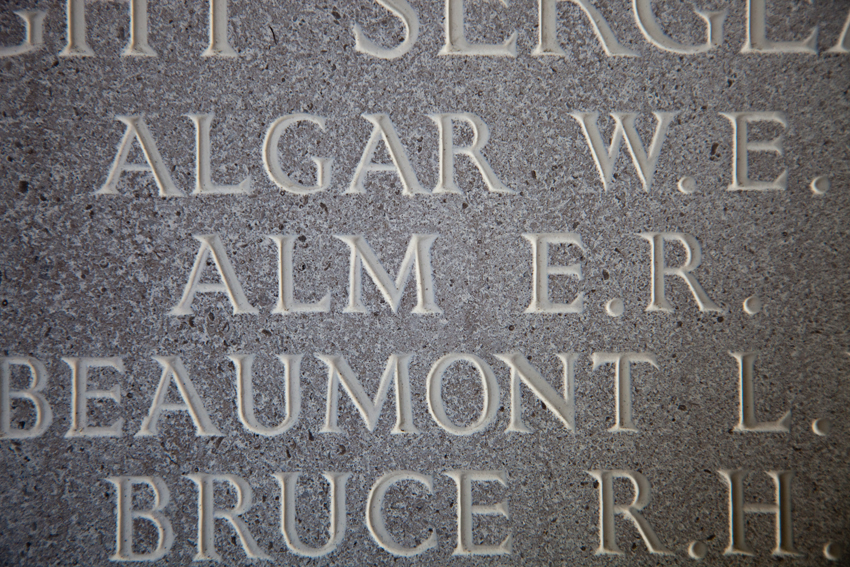
Canada's Bomber Memorial contains the names of 10,063 brave Canadian members of Bomber Command who died during World War II. To see images of the beautiful Memorial at Nanton, Alberta, click here. In the middle of the second column of this panel one can see the name of Edwin Richard Alm.
This image from Canada's Bomber Command Memorial was taken by Lloyd and Susan Campbell.